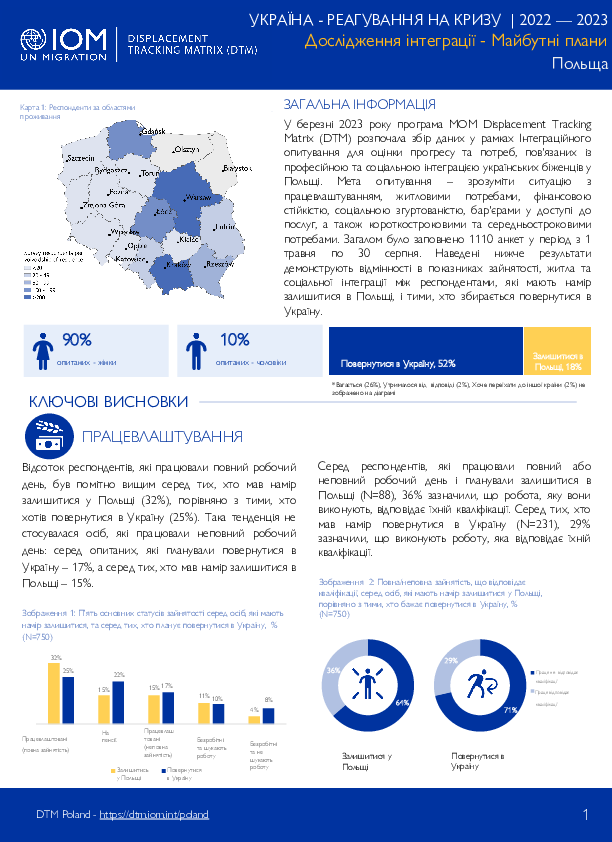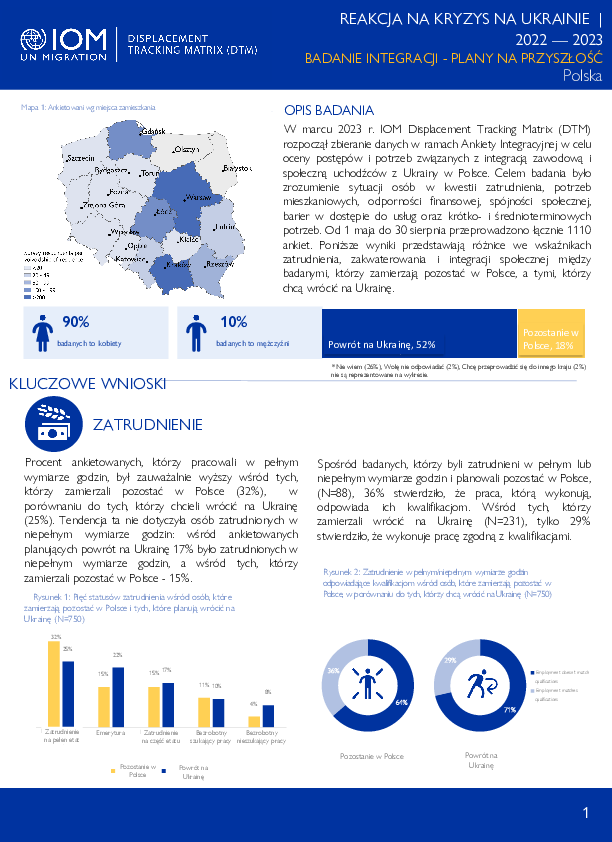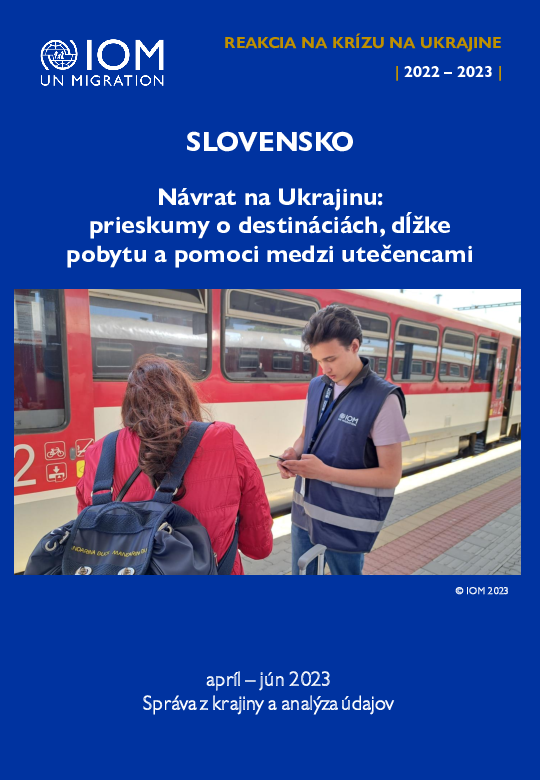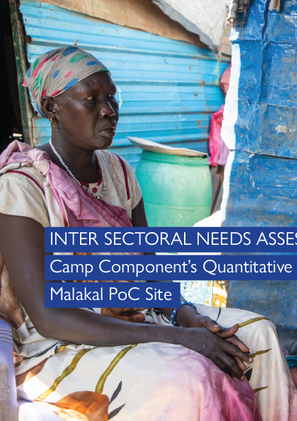-
Countries
-
Data and Analysis
-
Special Focus
-
Crisis Responses
Return Intention
Contact
DTMUkraine@iom.int
Location
Ukraine
Activity
- Survey
- Return Intention
Period Covered
May 01 2023 -Jun 30 2023
In round 3, out of the 156 return locations assessed, 25 recorded high severity conditions for one or more driver of severity. This equates to nearly a third of the estimated returnee population in assessed locations residing in high severity conditions (31%, 432,000 people).
This is a restricted dataset. To get access, kindly click on the 'Request Access' button.
Population Groups
Survey Methodology
Unit of Analysis Or Observation
Type of Survey or Assessment
Keywords
Geographical Scope
Administrative boundaries with available data
The current dataset covers the following administrative boundaries
Contact
DTMUkraine@iom.int
Location
Ukraine
Activity
- Survey
- Return Intention
Period Covered
Mar 01 2023 -Apr 30 2023
In round 2, out of the 117 return locations assessed, 23 recorded high severity conditions for one or more driver of severity. This equates to nearly a third of the estimated returnee population in assessed settlements residing in high severity conditions (29%, 499,000 people).
This is a restricted dataset. To get access, kindly click on the 'Request Access' button.
Population Groups
Survey Methodology
Unit of Analysis Or Observation
Type of Survey or Assessment
Keywords
Geographical Scope
Administrative boundaries with available data
The current dataset covers the following administrative boundaries
Contact
DTMUkraine@iom.int
Location
Ukraine
Activity
- Survey
- Return Intention
Period Covered
Jul 01 2023 -Aug 31 2023
In round 4 assessment, nearly a third of the estimated returnee population reside in locations which recorded high severity for one or more drivers of severity. This equates to approximately 680,000 people residing in high severity conditions in 57 locations, amidst 186 return locations assessed.
This is a restricted dataset. To get access, kindly click on the 'Request Access' button.
Population Groups
Survey Methodology
Unit of Analysis Or Observation
Type of Survey or Assessment
Keywords
Geographical Scope
Administrative boundaries with available data
The current dataset covers the following administrative boundaries

Contact
DTM Europe, DTMMediterranean@iom.int
Language
English
Location
Slovakia
Period Covered
Apr 01 2023
Jun 30 2023
Activity
- Survey
- Return Intention
This report is based on a survey of displacement patterns, needs and intentions conducted by IOM's Displacement Tracking Matrix (DTM) in 11 countries included in the Regional Response Plan for Ukraine in 2023: 6 countries neighbouring Ukraine — Belarus, Hungary, Poland, Republic of Moldova, Romania and Slovakia — and 5 other countries particularly impacted by the arrivals of refugees from Ukraine since the start of the war in February 2022 — Bulgaria, Czechia, Latvia and Lithuania.
Slovakia — Key Findings:
- Top oblasts of origin: Kharkivska (16%), Zakarpatska (14%), Donetska oblast (11%) and Kyiv city (12%)
- Intention to move: 79% have no intention to move, 5% want to move to a different country (Top 3 destinations were: Germany, Ireland, Canada), 5% would like to return to their region of origin in Ukraine.
- Education level: 53% completed tertiary, 3% post-secondary and 33% upper secondary education.
- Employment status: 32% employed and 29% unemployed respondents (6% of the unemployed were not looking for a job). The rest were retired, students, or persons on maternity or paternity leave.
- Immediate needs: Health services (50%), financial support (48%), medicine (45%), language courses (34%), education for adults (31%).*
- Inclusion challenges: Financial issues (45%), language barriers (26%), access to services (26%).*
*Multiple answers possible.

Contact
DTM Europe, DTMMediterranean@iom.int
Language
Ukrainian
Location
Poland
Period Covered
May 01 2023
Aug 30 2023
Activity
- Survey
- Return Intention
У березні 2023 року програма МОМ Displacement Tracking Matrix (DTM) розпочала збір даних у рамках Інтеграційного опитування для оцінки прогресу та потреб, пов'язаних із професійною та соціальною інтеграцією українських біженців у Польщі. Мета опитування – зрозуміти ситуацію з працевлаштуванням, житловими потребами, фінансовою стійкістю, соціальною згуртованістю, бар'єрами у доступі до послуг, а також короткостроковими та середньостроковими потребами. Загалом було заповнено 1110 анкет у період з 1 травня по 30 серпня. Наведені нижче результати демонструють відмінності в показниках зайнятості, житла та соціальної інтеграції між респондентами, які мають намір залишитися в Польщі, і тими, хто збирається повернутися в Україну.

Contact
DTM Europe, DTMMediterranean@iom.int
Language
English
Location
Poland
Period Covered
May 01 2023
Aug 30 2023
Activity
- Survey
- Return Intention
W marcu 2023 r. IOM Displacement Tracking Matrix (DTM) rozpoczął zbieranie danych w ramach Ankiety Integracyjnej w celu oceny postępów i potrzeb związanych z integracją zawodową I społeczną uchodźców z Ukrainy w Polsce. Celem badania było zrozumienie sytuacji osób w kwestii zatrudnienia, potrzeb mieszkaniowych, odporności finansowej, spójności społecznej, barier w dostępie do usług oraz krótko- i średnioterminowych potrzeb. Od 1 maja do 30 sierpnia przeprowadzono łącznie 1110 ankiet. Poniższe wyniki przedstawiają różnice we wskaźnikach zatrudnienia, zakwaterowania i integracji społecznej między badanymi, którzy zamierzają pozostać w Polsce, a tymi, którzy chcą wrócić na Ukrainę.

Contact
DTM Europe, DTMMediterranean@iom.int
Language
English
Location
Poland
Period Covered
May 01 2023
Aug 30 2023
Activity
- Survey
- Return Intention
In March of 2023, IOM’s Displacement Tracking Matrix (DTM) launched its Integration Survey data collection exercise to assess the progress and needs relating to labour and social integration of refugees from Ukraine in Poland. The aim of the assessment is to gain an understanding of the employment situations, housing needs, financial resilience, social cohesion, barriers to accessing services, and short-medium term needs of refugees. In the reporting period of 1 May - 30 August, a total of 1,110 surveys were conducted. The findings below reflect the differences in employment, accommodation, and social inclusion indicators between respondents who intend to remain in Poland as compared to those who intend to return to Ukraine.

Contact
DTM Europe, DTMMediterranean@iom.int
Language
English
Location
Slovakia
Snapshot Date
Jun 30 2023
Activity
- Survey
- Return Intention
Utečenci z Ukrajiny a štátni príslušníci tretích krajín (ŠPTK) od 24. februára 2022 utekajú do susediacich krajín pred vojnou. K júlu 2023 bolo v Európe zaznamenaných takmer šesť miliónov utečencov. Okrem toho od februára 2022 prekročilo hranice Ukrajiny do susediacich krajín viac ako 20 miliónov utečencov a migrantov z Ukrajiny alebo tretích krajín.
IOM v polovici apríla 2022 nasadila svoj nástroj Displacement Tracking Matrix (DTM) určený na monitorovanie vysídlených osôb. Pomocou neho sa zbierajú údaje v prieskumoch jednotlivcov v krajinách susediacich s Ukrajinou pri tom, ako prekračujú hranicu späť na Ukrajinu. Jeho cieľom je zlepšiť pochopenie profilov, vzorcov vysídlenia, zámerov a potrieb tých, ktorí sa tam vracajú. Táto správa je založená na prieskumoch zozbieraných na Slovensku v období od 10. apríla do 30. júna 2023 v Bratislave a Košiciach na tranzitných bodoch (vlakových a autobusových staniciach) od osôb smerujúcich priamo na Ukrajinu.

Contact
DTM South Sudan, SouthSudanDTM@iom.int
Language
English
Location
South Sudan
Period Covered
Sep 01 2022
Oct 31 2022
Activity
- Survey
- Return Intention
Between September and October 2022, the International Organization for Migration’s Displacement Tracking Matrix (IOM DTM) undertook its third household-level multi-sector assessment of selected urban areas and camps for internally displaced persons (IDPs) in South Sudan. The assessment aims to:
• Quantify the prevalence of vulnerabilities and humanitarian needs across sectors, with a focus on food security, economic vulnerability and nutrition as well as selected indicators on shelter and non-food items (SNFI), education, health, water, hygiene and sanitation (WASH), protection (including child protection and gender-based violence) and mental health and psycho-social support (MHPSS).
• Generate a better understanding of urban displacement and migration, including return and relocation after displacement in South Sudan or abroad.
There has been slow progress in the humanitarian situation in South Sudan. People’s humanitarian needs continue to rise, driven by cumulative and compounding effects of years of conflict, sub-national violence, food insecurity, climate crisis and public health challenges. Conflict and insecurity, fueled by sub-national and inter-communal violence, crime, and wide-scale impunity, continue to be among the main drivers of humanitarian needs in South Sudan.
Based on the request of the Humanitarian Country Team (HCT), mandated OCHA, IOM, and REACH to implement Inter-Sectoral Needs Assessment that aimed to understand demographics, multi-sectoral needs (including the level of severity) and barriers to assistance as well as displacement patterns and household-level scale.

Contact
DTM South Sudan, SouthSudanDTM@iom.int
Language
English
Location
South Sudan
Period Covered
Sep 01 2022
Oct 31 2022
Activity
- Survey
- Return Intention
Between September and October 2022, the International Organization for Migration’s Displacement Tracking Matrix (IOM DTM) undertook its third household-level multi-sector assessment of selected urban areas and camps for internally displaced persons (IDPs) in South Sudan. The assessment aims to:
• Quantify the prevalence of vulnerabilities and humanitarian needs across sectors, with a focus on food security, economic vulnerability and nutrition as well as selected indicators on shelter and non-food items (SNFI), education, health, water, hygiene and sanitation (WASH), protection (including child protection and gender-based violence) and mental health and psycho-social support (MHPSS).
• Generate a better understanding of urban displacement and migration, including return and relocation after displacement in South Sudan or abroad.
There has been slow progress in the humanitarian situation in South Sudan. People’s humanitarian needs continue to rise, driven by cumulative and compounding effects of years of conflict, sub-national violence, food insecurity, climate crisis and public health challenges. Conflict and insecurity, fueled by sub-national and inter-communal violence, crime, and wide-scale impunity, continue to be among the main drivers of humanitarian needs in South Sudan.
Based on the request of the Humanitarian Country Team (HCT), mandated OCHA, IOM, and REACH to implement Inter-Sectoral Needs Assessment that aimed to understand demographics, multi-sectoral needs (including the level of severity) and barriers to assistance as well as displacement patterns and household-level scale.
Pagination
- Previous page
- Page 10
- Next page
